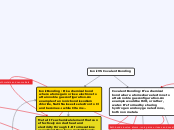af Raneem Abouseta 6 år siden
517
Ionic VS Covalent Bonding
Lewis symbols and structures are visual representations that show the valence electrons in an element or the bonding between atoms in a molecule, such as in methane. Electronegativity is an essential concept that describes an atom'








